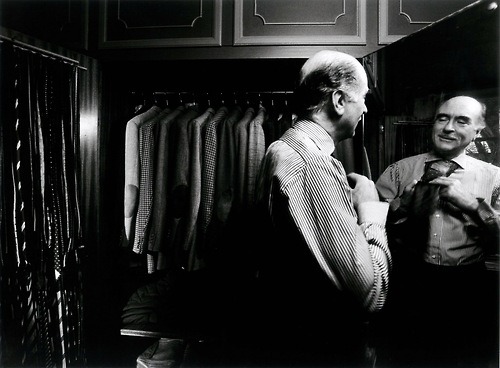
The world of classic men’s clothing often feels like it’s filled with a dizzying number of arcane and archaic rules for how to get “properly” dressed. On one hand, I think people ought to not take these things too seriously. They are suggestions; not dictums. In fact, while I think these suggestions are useful, at the end of the day, you have to develop your own intuition for what looks good and dress according to your own eye. Not doing so can make you look a bit stiff; like you put on your clothes according to a “paint by numbers” diagram.
On the other hand, these things aren’t just for pedantry. Knowing about the history of certain garments and how they’ve been classically worn can be quite useful. Take a simple issue, for example: knowing what details make a garment more or less formal. At one extreme of the formality scale is evening wear, such as the tuxedo, which is classically known as having a single button front, peak lapels, and jetted pockets. Less formal is the city suit, which can be a single- or double-breasted navy number with notch lapels and welted pockets. Less formal still would be a rustic sport coat, something like a checked tweed made with patch pockets, swelled edges, and possibly even elbow patches. The general principle here is that the more simple the piece, the more formal it’s considered, though each detail may have it’s own unique place in the canon (e.g. all things being equal, peak lapels are considered more formal than notch lapels simply because of their association with evening wear). It’s the sum of the details that make up the spirit and place of a garment.
This may seem like a lot of unnecessary pedantry until you realize that these things could explain why a peak lapel, single breasted jacket might not look terribly right with a pair of country corduroys and Scotch-grain boots. Or why if you’re out shopping, you may want to avoid garments with contradictory details, as they’ll be harder to wear (e.g. an oxford cloth button down shirt made with French cuffs). Pairing shirts, ties, trousers, and jackets according to their formality, place (city vs. country), seasonal appeal (summer linen, winter tweed); and general aesthetic is what often leads to more successful ensembles. To do that, however, you need to know a little more about how a garment’s details defines it with respect to these dimensions.
Which is why knowing a bit about history can be useful.